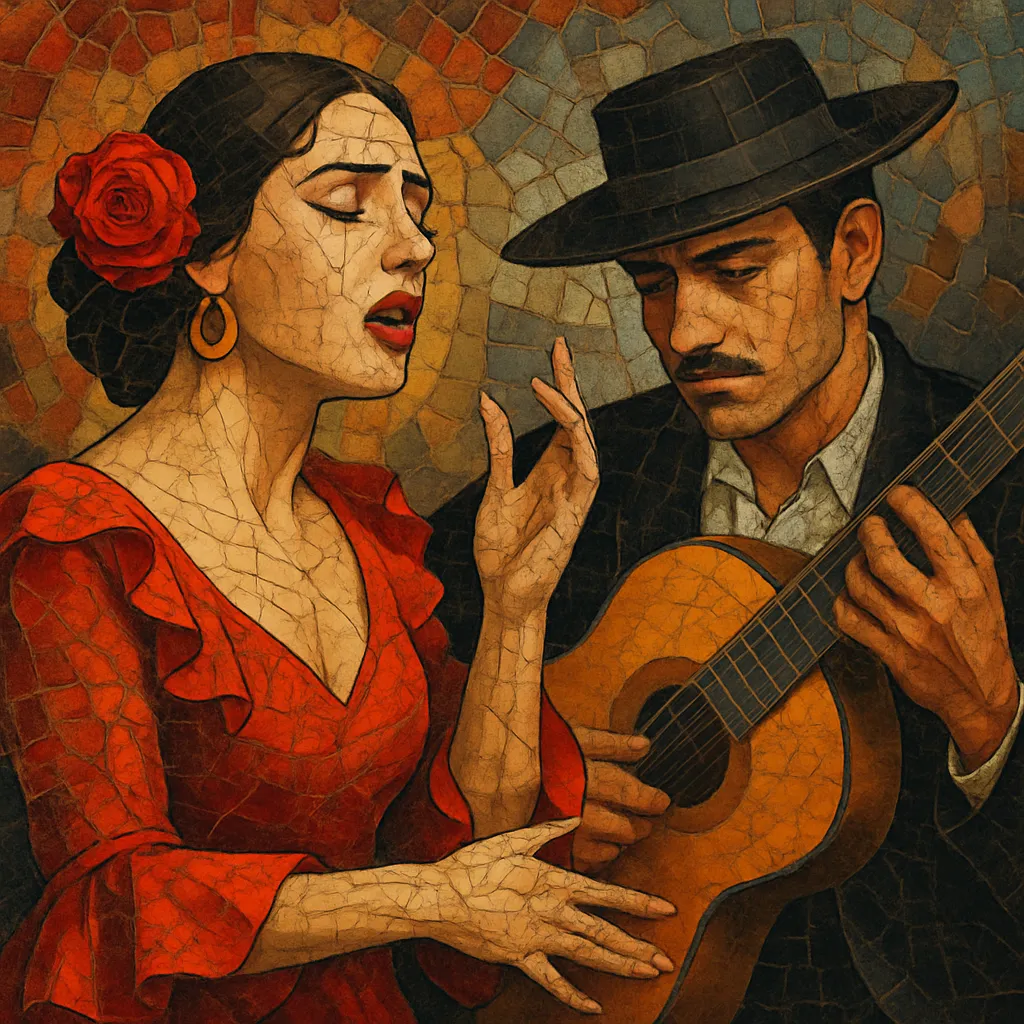Copla (often called copla andaluza or canción española) is a dramatic Spanish popular song style characterized by narrative lyrics, big emotions, and theatrical performance. It typically tells compact, melodramatic stories of love, jealousy, honor, betrayal, social stigma, or fate, delivered by a solo singer with highly expressive phrasing.
Musically, copla favors clear tonal harmony (often minor-key), memorable melodies, and accompaniment that ranges from guitar or piano to full orchestra or band. Rhythms frequently draw on pasodoble and bolero feels, with touches of flamenco color and the Andalusian cadence that imbue the songs with a distinctly Iberian character. Historically linked to stage and cinema, copla thrives on performance: commanding vocals, precise diction, and emotional acting are as central as the music itself.
Copla crystallized in Spain in the early 20th century, drawing on the theatrical traditions of tonadilla and zarzuela, the urban cabaret flavor of cuplé, and the melodic and rhythmic language of flamenco and bolero. Songwriting teams such as Quintero, León y Quiroga helped define the idiom with tightly crafted, narrative songs designed for stage performance.
The genre flourished from the 1930s through the 1950s, when powerful vocalists popularized coplas in theaters, radio, and film. Its stories—at once intimate and archetypal—resonated widely. Cinema musicals and variety shows amplified its reach, and arrangements expanded from small ensembles to lush orchestras.
During the Franco regime, copla operated under censorship that shaped acceptable themes and language. Despite this, it became a cultural mainstay and a vehicle for coded social commentary and gendered narratives. Some artists faced exile or persecution, while others became national icons.
With the rise of international pop and rock in the 1960s, copla’s mainstream prominence waned, but it lived on through star interpreters who bridged it to the emerging Spanish ballad tradition (canción melódica). From the late 1970s and 1980s, artists such as Carlos Cano revived and reinterpreted copla with new orchestration and political framing. Television contests and tribute projects in the 2000s–2010s renewed public interest. Today, copla remains a cornerstone of Spanish vocal art, informing contemporary singer-songwriters and stage performance aesthetics.


